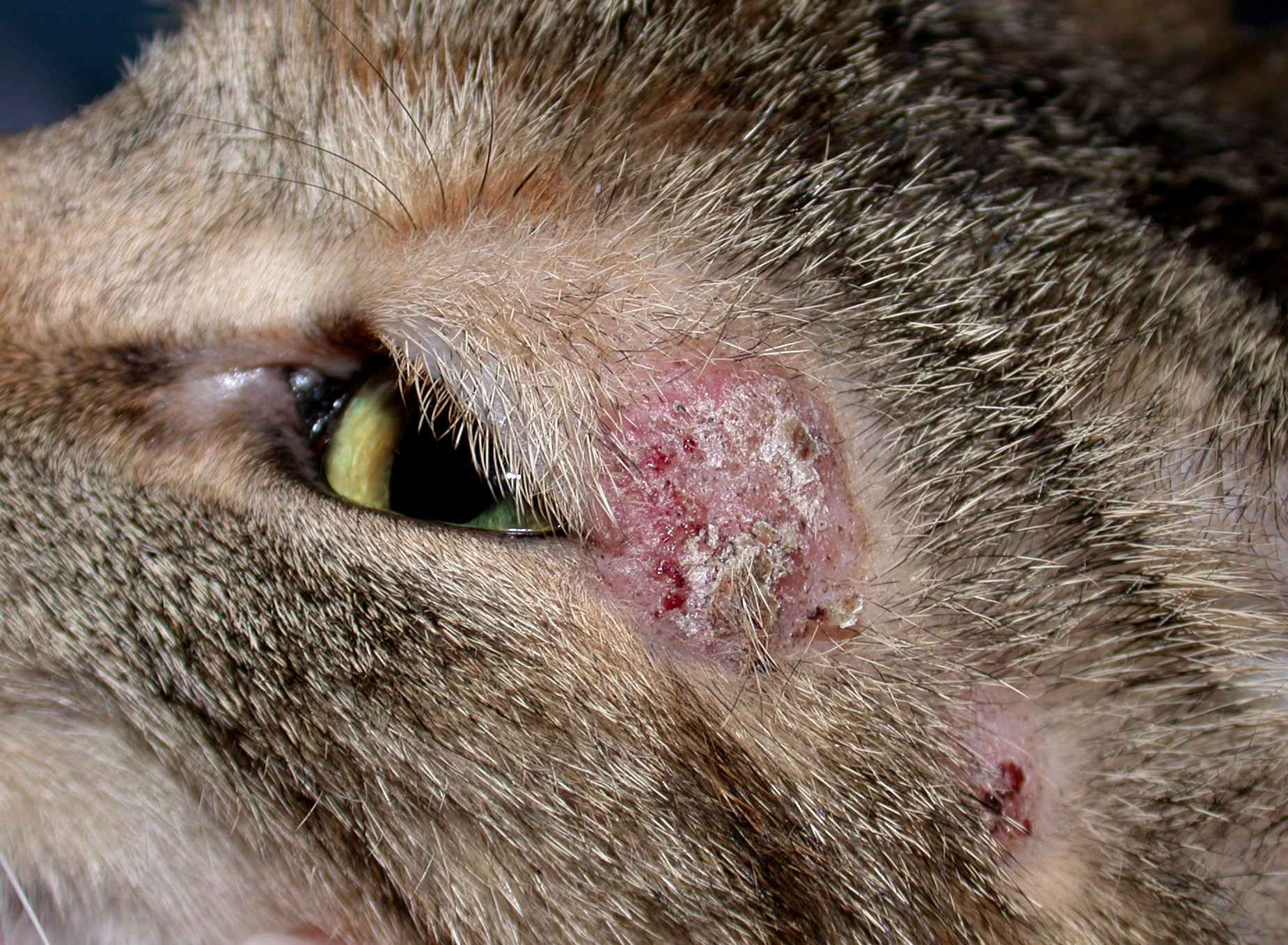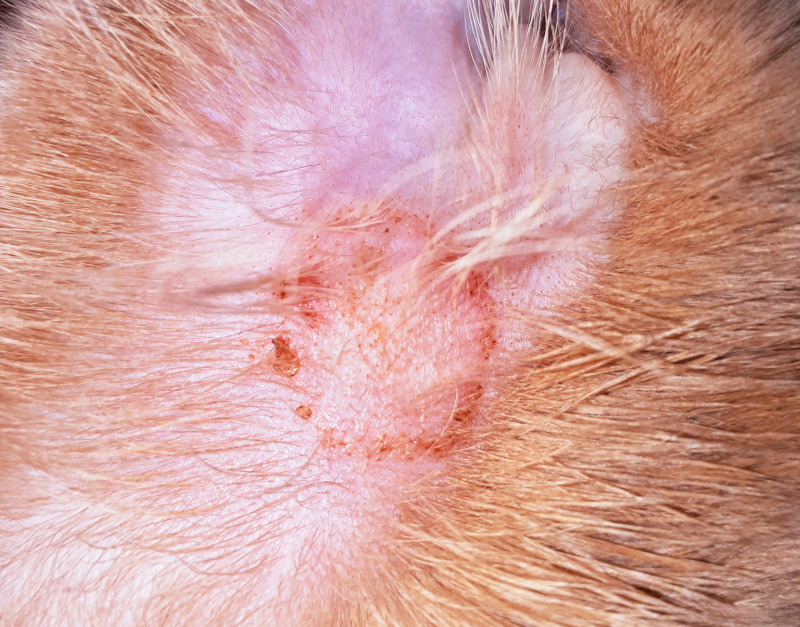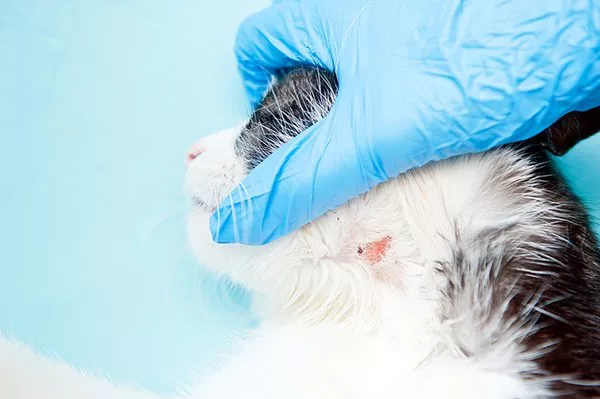Red, circular lesions on a cat’s skin usually indicate ringworm. Hair loss and itchiness often accompany these lesions.
Ringworm in cats is a common fungal infection that can affect both pets and humans. This contagious condition often leads to red, circular patches on the skin, accompanied by hair loss. Early detection is crucial to prevent the spread of the infection.
Pet owners should look for signs such as scaly or inflamed skin, especially around the ears, face, and paws. Regular veterinary check-ups and proper hygiene can help in early diagnosis and treatment. Understanding these symptoms ensures timely intervention, keeping your cat healthy and your home ringworm-free.
What Is Ringworm?
Ringworm is a fungal infection. It affects the skin of cats. The infection causes circular patches. These patches are often red and itchy. The fungus lives on the outer layer of skin. It feeds on keratin, a protein found in skin, hair, and nails. Cats can get it from other animals or the environment. Infected cats can spread it to humans and other pets.
Many people think ringworm is caused by a worm. This is not true. It is a fungus, not a worm. Some believe only dirty cats get ringworm. This is also wrong. Any cat can get it, no matter how clean. People often think ringworm is not serious. It can be harmful if not treated. Proper treatment and care are important.

Credit: www.coloradoanimalrescue.org
Causes Of Ringworm In Cats
Fungal spores can live in the environment. They can be on bedding, carpets, and furniture. Cats can get spores from other infected animals. Spores can stick to a cat’s fur. This makes it easy for the fungus to spread.
Warm and humid areas help the fungus grow. Crowded places can increase the risk. Shelters and catteries often have higher chances of ringworm. Proper cleaning can help reduce the risk. Always keep your cat’s living area clean and dry.
Early Signs To Watch For
Cats may start to scratch more. They might become restless and irritable. Look for changes in their grooming habits. Cats with ringworm often groom less. They could hide more than usual. Notice if your cat avoids being touched. These changes can be early signs.
Small, round patches of hair loss can appear. The skin may look red or scaly. Sometimes, the patches are itchy. Check for rough, thickened skin. The spots might spread to different parts of the body. Look for changes near the ears, paws, and tail. These signs can help identify ringworm early.

Credit: www.cdph.ca.gov
Common Symptoms
Cats with ringworm often lose hair in patches. These patches are usually circular. Hair loss can be seen on the head, tail, or paws. Bald spots may appear suddenly.
Scaly patches are a sign of ringworm. These patches look dry and flaky. The skin can be red and itchy. Scales may fall off when touched.
Red lesions are common in ringworm. These lesions are round and raised. They may have a red border. Lesions can be found anywhere on the body.
Diagnosis Methods
A cat with ringworm often shows symptoms like hair loss and scaly skin. A vet may perform a Wood’s lamp test or skin scraping to confirm the diagnosis.
Veterinary Examination
A veterinarian will check the cat’s skin and fur. They look for red, circular patches. The vet uses a special light called a Wood’s lamp. This light helps find ringworm. If the skin glows green, it might be ringworm.
Laboratory Tests
The vet takes a skin or fur sample. They send it to a lab for testing. Lab tests confirm if it is ringworm. Results can take a few days. Sometimes, a fungal culture is done. This test grows the fungus to see if it is ringworm.
Treatment Options
Identifying ringworm in cats involves checking for bald patches, scaly skin, and itching. Treatment options include antifungal creams, medicated shampoos, and oral medications prescribed by a vet.
Topical Medications
Topical medications are applied directly to the affected area. They help kill the fungus on the skin. Common treatments include antifungal creams and ointments. These should be applied as directed by your vet. It’s important to continue the treatment even if the symptoms seem to disappear. This prevents the ringworm from coming back. Always wash your hands after applying the medication to your cat.
Oral Medications
Oral medications are another option for treating ringworm. These medications work from the inside to fight the infection. Your vet will prescribe the right dosage for your cat. Oral treatments usually take several weeks to be effective. It’s crucial to follow the vet’s instructions carefully. Do not stop the medication early, even if your cat looks better. Consistent treatment is key to curing the infection.
Preventing Ringworm
Always wash hands after touching your cat. This helps prevent ringworm spread. Clean your cat’s bedding often. Use hot water and soap. Disinfect toys and grooming tools. Avoid sharing items between pets. Brush your cat regularly. Check for any skin changes.
Vacuum your home frequently. Focus on areas your cat likes. Clean carpets and furniture with a disinfectant. Use a bleach solution for hard surfaces. Wash all pet bedding in hot water. Dry them on high heat. Keep your cat’s living area clean. Reduce clutter to limit fungus growth.

Credit: kb.rspca.org.au
When To See A Vet
Watch for persistent symptoms in your cat. These include itchiness, hair loss, and red lesions. Symptoms lasting more than a week need attention. Your cat might also show signs of discomfort. Scratching or licking the affected area is common. Skin flakes or dandruff are also clues. If your cat’s condition doesn’t improve, consult a vet.
Severe cases of ringworm require urgent care. Look for large, bald patches or multiple lesions. Your cat may develop secondary infections. These happen when bacteria enter the skin. Signs include swelling, pus, or a foul odor. In such cases, seeing a vet quickly is crucial. The vet will likely prescribe antifungal medication. This helps to clear up the infection fast.
Frequently Asked Questions
What Does A Ringworm On A Cat Look Like?
A ringworm on a cat appears as circular, bald patches with red, scaly edges. The skin may look inflamed.
Is Cat Ringworm Contagious To Humans?
Yes, cat ringworm is contagious to humans. It spreads through direct contact with an infected cat or contaminated objects.
How Can I Test My Cat For Ringworm At Home?
Use a blacklight to check for glowing patches on your cat’s skin. Consult a vet for accurate diagnosis.
What Can Be Mistaken For Ringworm In Cats?
Allergies, bacterial infections, and flea infestations can be mistaken for ringworm in cats. Consult a vet for proper diagnosis.
Conclusion
Recognizing ringworm in cats is crucial for their health. Watch for symptoms like hair loss and scaly skin. Early detection allows for prompt treatment. Regular vet visits and hygiene practices can prevent the spread. Stay vigilant and keep your feline friend healthy.
Thanks for reading and caring for your cat’s well-being.

Hello, this is Frank Swanson, the owner, and operator of Pet Info Hut. I created this website as a way to share my love of pets with the world. I have over 7 years of experience working with animals, and I have a passion for helping people care for their pets. I hope that you find my website useful and informative. Thanks for visiting!
